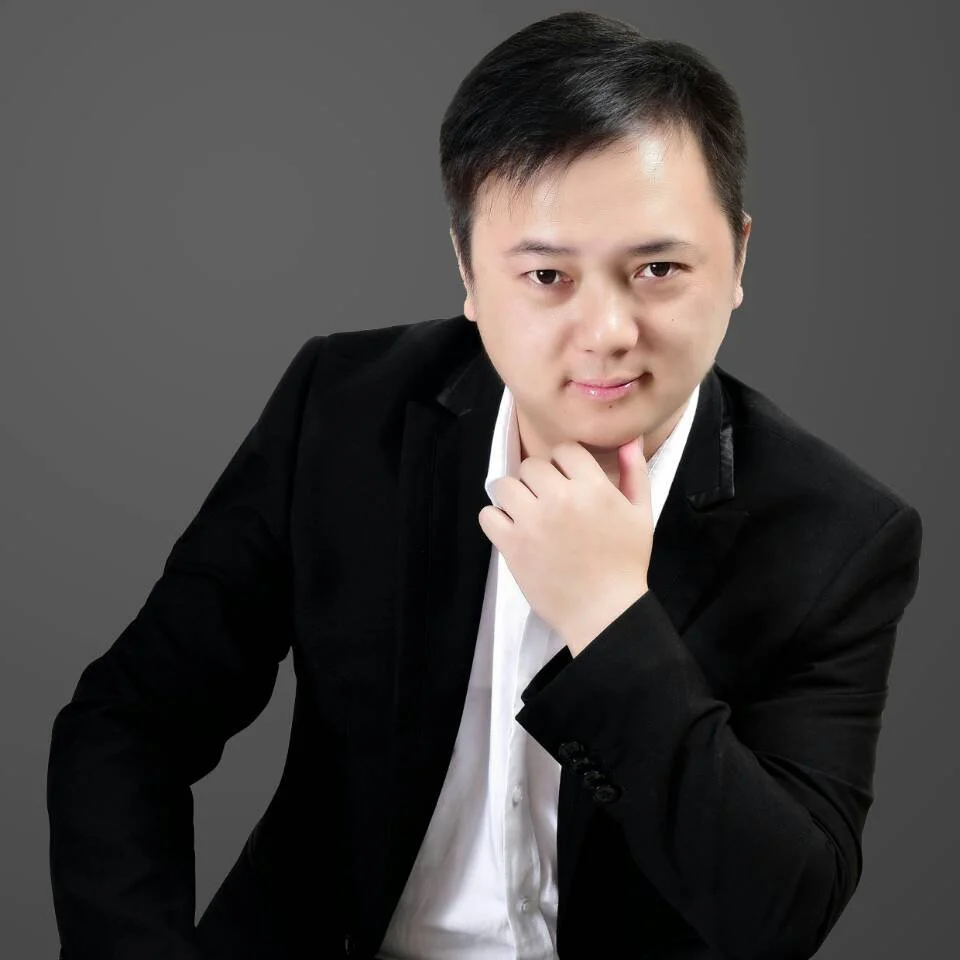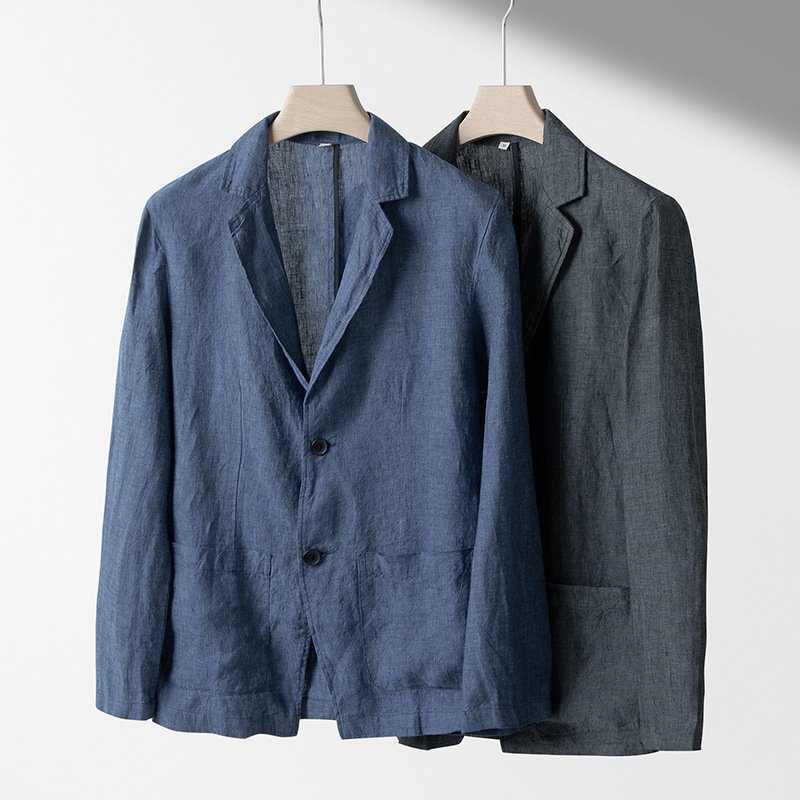
Imagine running your fingers across a swatch of linen so soft and even that it feels like an heirloom, yet it resists wrinkles better than any cotton you’ve tried. That’s the hallmark of true China linen—an age-old craft honed by generations of flax farmers and weavers. High-quality China linen is defined by long-staple fibers (often 32–36 mm), minimal impurities (<1% non-lint matter), and expert retting and scutching processes that preserve fiber strength and fineness.
It’s not just about luxury; it’s about performance and provenance. A luxury resort in Provence once switched from generic imports to certified French linen and saw guest satisfaction—and linen lifespan—soar, proving that fabric origins truly matter. Stick around to learn exactly how to identify and source the finest China flax weaves for your next collection.
What Defines “High-Quality” Linen Sourced from China Mills?

When you ask “what makes linen truly superior,” you’re looking at fiber length, purity, and processing methods. Premium China linen uses long-staple flax grown in Normandy or Belgium, harvested by hand at peak maturity, and water-retted to gently separate fibers without chemical damage. The result is yarns with ≥32 mm staple length, <1% shive content, and uniform micronaire (3.5–4.0)—metrics that translate into fabrics with exceptional tensile strength (28–32 cN/tex), minimal pilling, and a silky yet substantial hand.
Unpacking Linen Quality Parameters
Fiber Staple Length & Uniformity
- Definition: Measured in millimeters, longer staples spin into finer, stronger yarns.
- Standards: Premium: ≥32 mm average, CV ≤5%. Standard: 26–30 mm, CV ≤10%.
- Impact: Longer staples reduce yarn hairiness, improving print clarity and fabric drape.
Impurity & Shive Content
- Shive: Woody fragments remaining after retting.
- Acceptable Levels: High-end: <1% by weight. Commercial: 1–3%.
- Impact: Low shive ensures smoother hand feel and reduces abrasive wear on looms.
Retting Method & Fiber Strength
- Water Retting: Traditional, yields highest fiber strength (30–32 cN/tex).
- Dew Retting: Cost-effective, slightly lower strength (28–30 cN/tex).
- Chemical Retting: Fastest, can degrade fibers (25–28 cN/tex).
- Trade-Off: Water-retted linen is more expensive but outperforms in durability and softness.
Spinning & Yarn Specifications
- Yarn Count: Ne 30–40 for shirts; Ne 20–30 for heavier home linens.
- Twist Level: 20–25 TPI balances strength and softness.
- Impact: Correct twist prevents slubs from pulling out and ensures even dye uptake.
China Linen Quality Benchmarks
| Quality Parameter | Premium Grade | Commercial Grade | Performance Impact |
|---|---|---|---|
| Staple Length (mm) | ≥32 mm | 26–30 mm | ↑dr ape & tensile strength |
| Shive Content (%) | <1% | 1–3% | ↓abrasion, ↑hand softness |
| Fiber Strength (cN/tex) | 30–32 | 25–28 | ↑durability, ↓pilling |
| Retting Method | Water | Dew/Chemical | Water = best softness & longevity |
| Yarn Count (Ne) | 30–40 | 20–30 | Higher Ne = finer, lighter drape |
Critical Perspectives
- Cost vs. Performance Water-retted, long-staple linen commands a 20–30% premium—but for luxury or performance lines, the lifespan gains and tactile superiority often offset the higher spend.
- Environmental Considerations Water retting uses significant resources; some mills now employ closed-loop systems to minimize water waste—a factor worth auditing if sustainability is key.
- Consistency Across Batches Flax quality can vary seasonally; partner with mills that guarantee batch traceability and maintain consistent fiber metrics.
- Balancing Softness and Structure Over-combed yarns yield silky linen but can lose the characteristic natural slub that many customers seek—decide your brand’s signature look before locking in specs.
Which China Regions and Mills Are Renowned for Premium Linen Production?
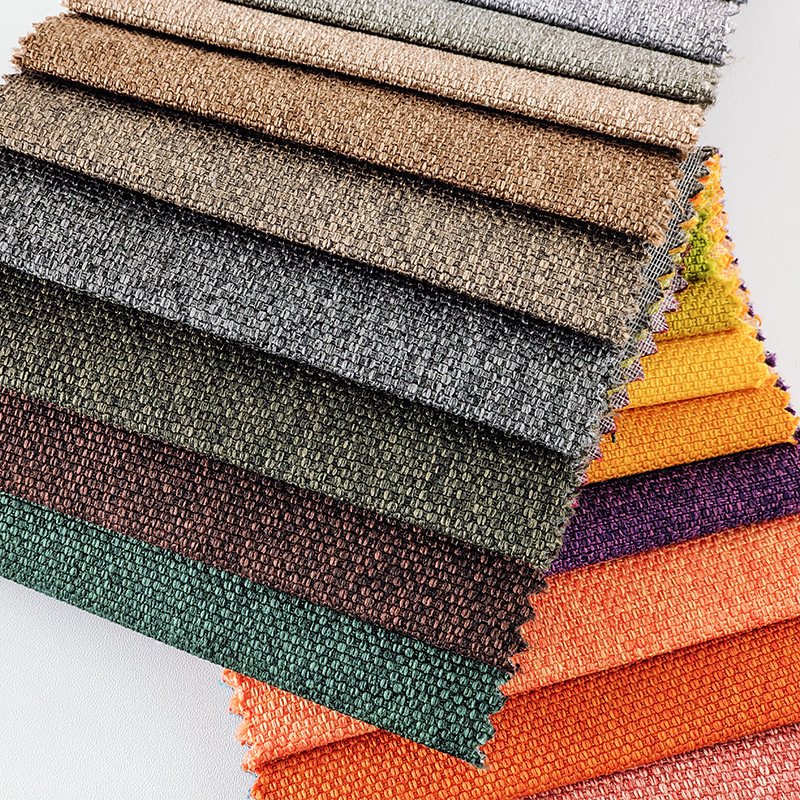
When sourcing top-tier linen, France’s Normandy, Belgium’s Flanders, and Ireland’s Ballyhaunis stand out for their prized flax cultivation and mill expertise. These regions combine ideal climates—cool, damp summers and chalky soils—with centuries-old retting traditions and state-of-the-art spinning facilities. Mills like Libeco (Belgium), Thomas Mason (France), and Joseph Holmes (Ireland) have become synonymous with consistent fiber quality, innovative weaving techniques, and rigorous quality controls that guarantee the long-staple, low-shive linen essential for luxury apparel and home textiles.
Mapping Europe’s Linen Heartlands
Normandy, France
- Characteristics: Soil: Calcium-rich, free-draining chalk soils ideal for flax root health. Climate: Mild, humid summers support water retting in slow-moving waterways.
- Notable Mills: Thomas Mason: Renowned for fine shirting linen (Ne 30–40), 100% water-retted. Les Tissages Perrin: Specializes in slubbed and dyed linens for fashion brands.
- Unique Strengths: Strong local cooperatives ensure traceability from seed to fabric.
Flanders, Belgium
- Characteristics: History: Over 200 years of linen tradition, with integrated farming and processing. Innovation: Closed-loop water treatment reduces environmental impact.
- Notable Mills: Libeco: Offers a spectrum from lightweight Ne 40 to heavy Ne 20 weaves; Oeko-Tex® certified. Sioen: Blends linen with high-performance fibers for technical applications.
- Unique Strengths: Vertical integration—owning flax farms, scutching, spinning, weaving under one roof.
Ballyhaunis, Ireland
- Characteristics: Climate: Cool Atlantic influences yield stronger, finer flax fibers. Craftsmanship: Small-scale artisanal mills maintain traditional hand-finishing.
- Notable Mills: Joseph Holmes: Specializes in heritage linens with distinctive slub structures. Irish Linen Guild Members: Offer traceable, Irish-grown flax linens.
- Unique Strengths: Hand-harvesting and dew retting produce linens with exceptional character.
Emerging Regions: Lithuania & Poland
- Trends: Modern co-ops in the Baltic states adopt high-efficiency water-retting and turbine-powered scutching.
- Mills: Klaipeda Mills (Lithuania): Competitive pricing for mid-weight linens (Ne 25–30). Polska Len (Poland): Focuses on organic, chemical-free linen variants.
- Considerations: Quality improving rapidly, but batch consistency can vary in early seasons.
Comparison of China Linen Regions & Mills
| Region / Mill | Staple Length (mm) | Common Yarn Counts (Ne) | Retting Style | Certifications | Specialty |
|---|---|---|---|---|---|
| Normandy, France | 32–36 | 30–40 | Water retted | Oeko-Tex®, OEKO-TEX® | Fine shirting, traceable coop sourcing |
| Flanders, Belgium | 32–34 | 20–40 | Water & closed-loop | GRS, Oeko-Tex® | Vertical integration, technical blends |
| Ballyhaunis, Ireland | 30–34 | 25–35 | Dew retted | Irish Linen Guild | Artisanal hand-finishing, slub character |
| Lithuania & Poland | 28–32 | 25–30 | Water & dew | Organic, GOTS | Competitive pricing, organic focus |
Critical Perspectives
- Heritage vs. Innovation Traditional regions offer proven quality but often at higher cost; emerging mills may provide competitive pricing but require stricter QC to ensure consistency.
- Traceability Importance Vertically integrated models (e.g., Libeco) guarantee end-to-end oversight—essential for brands emphasizing origin transparency.
- Environmental Impact Water-retting is superior for fiber quality but raises sustainability concerns—prioritize mills with closed-loop systems to mitigate ecological footprint.
- Logistical Considerations Proximity to major ports in Belgium and France reduce freight time and customs complexity compared to Baltic sources—factor lead time into your sourcing plan.
How Do Flax Farming Practices and Varietals Influence Linen Fiber Quality?
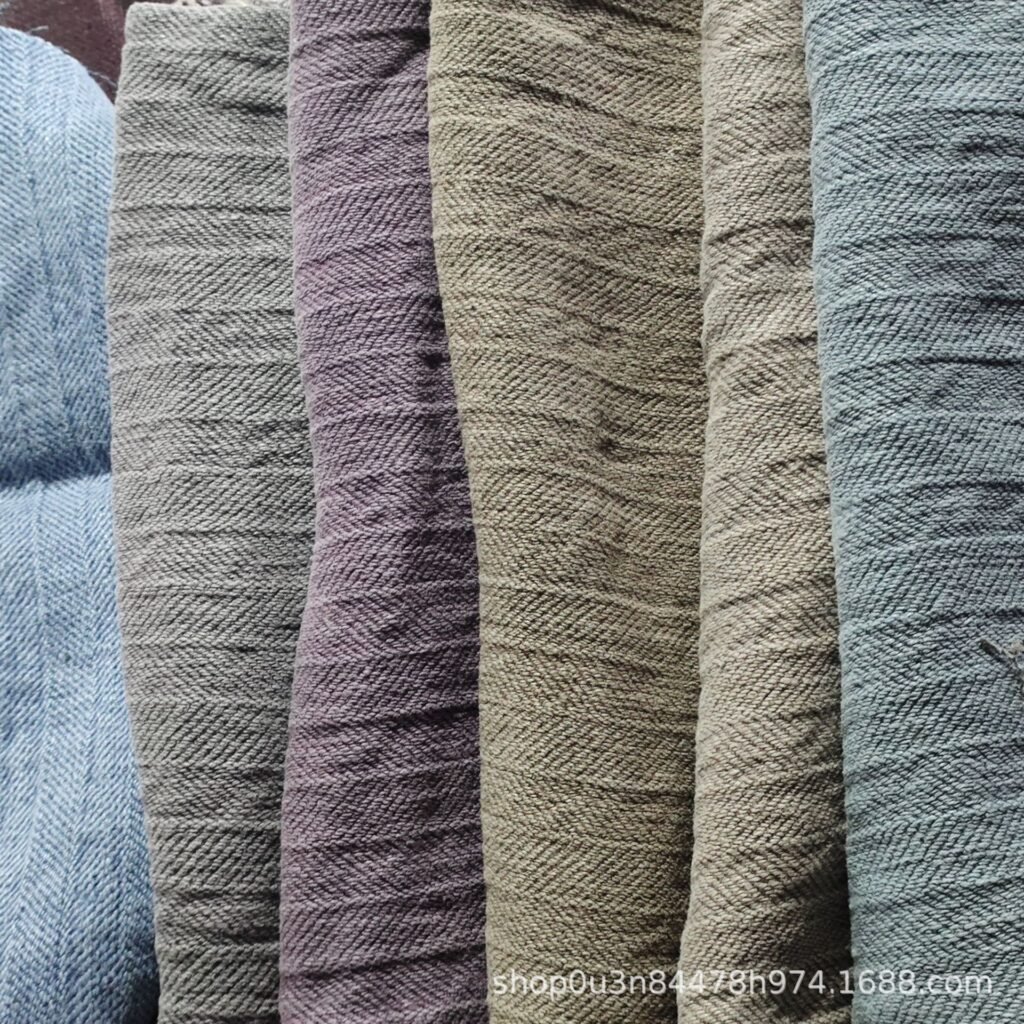
Flax’s journey from seed to fiber hinges on both the cultivar chosen and the agronomic methods applied. Premium China mills source specific flax varietals—like ‘Belinka’ in Belgium or ‘Macbeth’ in France—bred for long, fine fibers. Sustainable practices such as crop rotation, minimal pesticide use, and precise harvest timing at full flowering ensure staple lengths above 32 mm and fiber uniformity (CV ≤ 5%). These choices yield yarns with superior tensile strength (30–32 cN/tex), a silky hand, and consistent dye uptake.
Agronomy and Genetics Driving Top-Tier Flax
Varietal Selection
- Long‐Staple Cultivars: Belinka (Belgium): Averages 33–35 mm staple; bred for low lignin content (<3%). Macbeth (France): Excels in uniformity (CV < 4%) and high tensile strength.
- Impact: Cultivars dictate baseline fiber length, fineness, and pigment – foundation for all downstream quality.
Crop Rotation & Soil Health
- Rotation Cycle: 4–5 years between flax plantings reduces disease and promotes soil structure.
- Soil Amendments: Organic compost and lime applications maintain pH 6.5–7.0, optimizing flax fiber cell wall development.
- Impact: Healthy soil translates to uniform growth, reducing variability in stem diameter and fiber consistency.
Harvest Timing & Methods
- Optimal Window: Harvest at full bloom (50–55 days after sowing) when bast fibers reach maximum strength.
- Gentle Pulling vs. Mechanical: Pulling retains length; mechanical combines speed with careful blade settings to minimize fiber breakage.
- Impact: Precise timing and gentle extraction preserve long staples and minimize fiber damage.
Retting Environment
- Water Retting: Controlled tanks maintain 20–25 °C for 10–14 days, extracting pectins without harsh chemical exposure.
- Dew Retting: Exposes stalks to morning dew and UV for 4–6 weeks—slightly lower fiber strength but ecologically friendly.
- Impact: Proper retting removes impurities while retaining tensile integrity, critical for long-lasting linens.
Agronomic Factors vs. Fiber Quality Metrics
| Agronomic Factor | Practice | Fiber Outcome |
|---|---|---|
| Cultivar | Belinka (≥33 mm), Macbeth | ↑Staple length, ↑uniformity |
| Rotation Cycle | 4–5 years | ↓Disease incidence, ↑soil health |
| Soil pH | 6.5–7.0 | Optimal cell wall development |
| Harvest Timing | 50–55 days post-sowing | Peak spindle strength (cN/tex) |
| Retting Method | Water (10–14 d) vs. Dew (4–6 wk) | Water: ↑strength; Dew: eco‐friendly |
Critical Perspectives
- Varietal Consistency vs. Biodiversity Relying on a single high-performance cultivar can boost uniformity but may reduce genetic diversity—consider blending fibers from complementary varietals to mitigate risk.
- Intensive Agriculture vs. Organic Labeling High yields and fiber quality often stem from controlled inputs; transitioning to certified organic flax may slightly reduce staple length but fulfills growing market demand for clean‐label textiles.
- Retting Trade-Offs Water retting delivers unmatched fiber strength but poses environmental burdens; dew retting’s longer timeframe can bottleneck supply—work with mills that use closed-loop or hybrid retting systems.
- Climate Variability Flax is sensitive to summer temperature and rainfall; seasonal fluctuations can impact staple consistency—secure forward contracts and quality guarantees from growers to hedge against variability.
What Certifications and Standards Guarantee Authentic China Linen?
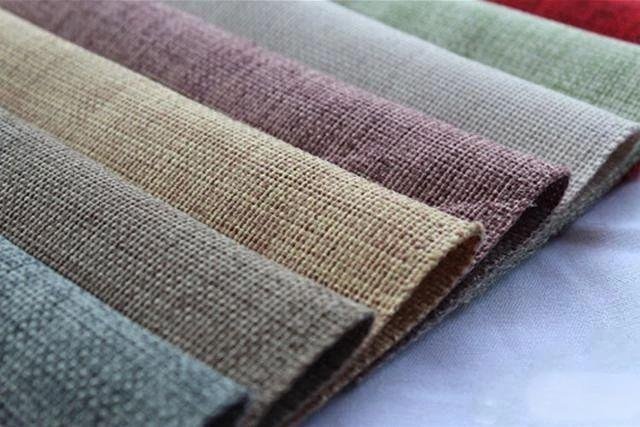
When sourcing linen, certification seals and regulatory standards serve as your proof of provenance and quality. Look for the China Flax® label—certifying linen made from China-grown flax—and the Masters of Linen® mark, which mandates 100% China fibers and production under stringent environmental and social criteria. Additional benchmarks include Oeko-Tex® Standard 100 for chemical safety and the Global Organic Textile Standard (GOTS) for organic cultivation. These certifications ensure your linen truly hails from top China regions and complies with industry-leading quality, safety, and sustainability protocols.
Key Linen Certifications and Their Requirements
China Flax® Label
- Scope: Guarantees fiber grown, retted, spun, and woven in Europe.
- Criteria: 100% China flax. Water or dew retting in Europe. Traceability from seed to finished fabric.
- Benefit: Assures regional quality and supports local economies.
Masters of Linen® Mark
- Scope: Extends China Flax® requirements to include finishing, weaving, and distribution.
- Criteria: All processing (spinning, weaving, finishing) within Europe. Compliance with EU environmental directives (REACH, wastewater treatment).
- Benefit: End-to-end guarantee of China origin and environmental stewardship.
Oeko-Tex® Standard 100
- Scope: Tests for over 300 harmful chemicals across all production stages.
- Classes: Class I (baby textiles) to Class IV (upholstery/hard goods).
- Benefit: Ensures safety for skin-contact applications, critical for apparel.
Global Organic Textile Standard (GOTS)
- Scope: Verifies organic fiber content (≥70%), environmentally and socially responsible processing.
- Criteria: No GMOs, restricted agrochemicals. Wastewater treatment and restricted chemical use. Fair labor practices per ILO conventions.
- Benefit: Guarantees organic integrity and ethical production.
Linen Certification Comparison
| Certification | Fiber Origin Requirement | Processing Locale | Environmental Criteria | Social Compliance |
|---|---|---|---|---|
| China Flax® | 100% China | Europe | Water/dew retting standards | Not required |
| Masters of Linen® | 100% China | Europe | EU directives, wastewater treatment | Worker safety & rights |
| Oeko-Tex® Standard 100 | Any | Any | Limits on harmful substances | Not required |
| GOTS | ≥70% organic | Any (certified) | Organic farming & processing rules | ILO labor standards |
Critical Perspectives
- Certification Costs vs. Market Value Achieving these certifications can add 5–15% to linen costs, but they unlock premium price points and eliminate supply-chain ambiguity.
- Overlap and Redundancy China Flax® and Masters of Linen® overlap on origin; combining them with Oeko-Tex® or GOTS provides a holistic assurance of both provenance and safety.
- Consumer Recognition Masters of Linen® and GOTS have strong brand recognition in Western markets—leverage these marks in marketing to signal trust.
- Emerging Standards Watch for upcoming EU ecolabels and REACH updates that may tighten restrictions on dyes and finishes, affecting compliance requirements.
How Do Spinning Count and Weave Techniques Impact Linen Performance?
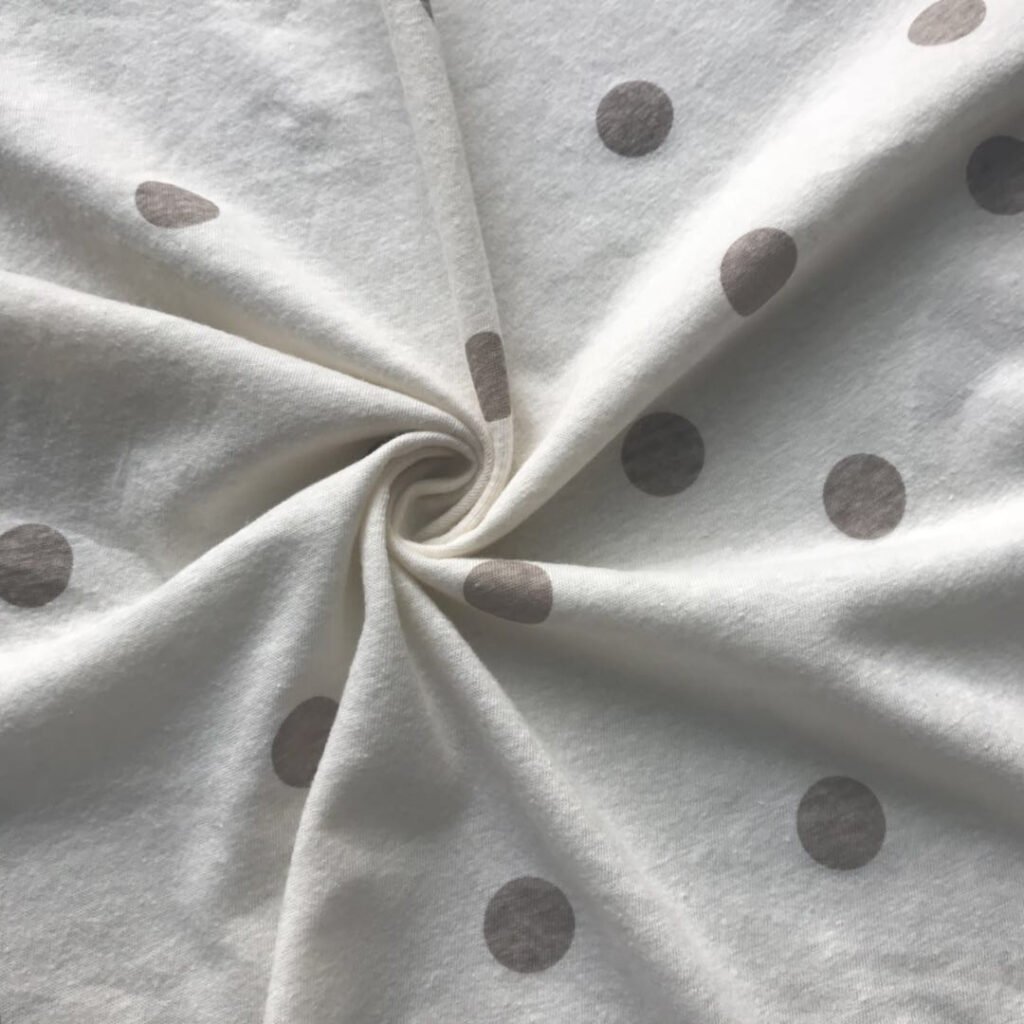
The interplay of yarn fineness and weave structure defines linen’s hand, drape, and durability. Finer yarns (Ne 30–40) woven in a tight plain or twill construction yield lightweight shirting linens with a silky drape and minimal pilling, while coarser counts (Ne 20–25) in a looser linen weave produce robust home‐textile weights with pronounced slub texture and high abrasion resistance. Selecting the right combination ensures your end product performs—whether it’s a flowing dress shirt or a hard‐wearing tablecloth.
Yarn Counts, Weave Types & Their Trade-Offs
Yarn Count (Ne System)
- Ne 30–40 (Fine Yarn) Characteristics: 840 yd per lb; spun from longest staples; smooth surface. Performance: Soft hand, fine detail printing, light weight (180–240 gsm). Use Cases: Luxury shirting, fine apparel, delicate summer dresses.
- Ne 20–25 (Coarse Yarn)
- Characteristics: 420–560 yd per lb; retains slub prominence.
- Performance: Textured hand, higher thickness (280–350 gsm), robust wear.
- Use Cases: Table linens, upholstery, heavy‐duty home textiles.
Weave Structures
- Plain Weave Details: 1×1 over-under; balanced strength in warp/weft. Attributes: Crisp hand, high tensile strength (32–34 cN/tex), low stretch. Application: Shirts, light curtains, pillowcases.
- Twill Weave Details: 2×2 or 3×1 diagonal ribs; floats enhance drape. Attributes: Improved abrasion resistance (\~60,000 Martindale rubs), softer hand. Application: Pants, heavier drapes, industrial aprons.
- Basket Weave Details: 2×2 grouping; bulkier, more open. Attributes: Thick body, rustic appearance, increased loft. Application: Craft cloth, textured throws.
Thread Density (EPI/PPI)
- High Density (16 × 14/cm) Result: Smooth printing base, tight feel, superior wind resistance.
- Low Density (10 × 8/cm) Result: Airy drape, pronounced slubs, enhanced breathability.
Spinning & Weave Combinations for Linen
| Yarn Count (Ne) | Weave Type | EPI × PPI (cm) | Fabric Weight (gsm) | Hand & Drape | Durability (Martindale) |
|---|---|---|---|---|---|
| 30–40 | Plain | 16 × 14 | 180–240 | Silky, crisp | 20,000 |
| 30–40 | Twill | 14 × 12 | 200–260 | Soft drape | 30,000 |
| 20–25 | Plain | 12 × 10 | 280–350 | Structured, textured | 40,000 |
| 20–25 | Basket | 10 × 8 | 300–380 | Bulky, rustic | 25,000 |
Critical Perspectives
- Fine vs. Coarse Trade-Off Fine yarns excel in print detail and hand but cost 15–25% more; coarse yarns deliver character at lower cost.
- Weave Complexity & Cost Twill looms run 10–20% slower than plain weave, increasing per-yard cost—reserve for high-wear or drape‐critical pieces.
- Density Impacts Higher EPI/PPI improves printing fidelity and wind resistance but reduces airflow—match density to climate and end use.
- Balancing Aesthetic & Function For a signature slub look, coarse yarns with basket weave are ideal; for corporate or uniform shirts, fine yarn plain weave ensures consistent appearance and print clarity.
Which Finishing Treatments Enhance Linen’s Hand, Durability, and Appearance?
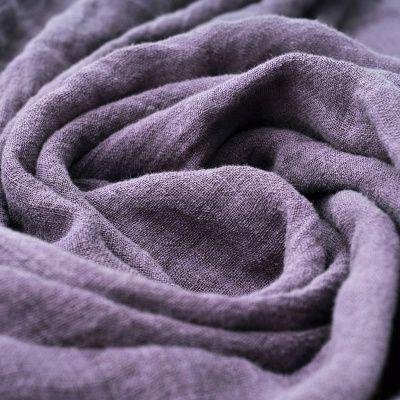
Finishing transforms raw linen into luxurious, hard-wearing fabric. Mercerization boosts luster and dye uptake by swelling fibers with caustic soda; enzyme washes soften the hand and reduce pilling; silicon‐based softeners impart silkiness; and durable water-repellent (DWR) coatings shed liquid without blocking breathability. Together, these finishes allow brands to fine-tune linen’s tactile qualities and performance, ensuring each garment feels and lasts as intended.
Common Linen Finishes and Their Effects
Mercerization
- Process: Treating woven linen with 20–30 g/L NaOH under tension.
- Benefits: Luster Increase: +15–25% CIE L\* value. Dye Uptake: +20–30% deeper shades. Durability: Fiber strength gains of \~10%.
- Considerations: Requires precise neutralization to avoid residual alkali.
Enzyme (Biopolishing) Wash
- Process: Applying cellulase enzymes at 1–2% owf (on-weight-of-fabric), 50–60 °C for 30–60 min.
- Benefits: Softness: Hand improves by \~30%. Pilling Reduction: ≥50% fewer pills in Martindale pilling tests.
- Considerations: Over-treatment can weaken fibers; time and concentration must be carefully controlled.
Silicon-Based Softeners
- Process: Pad-dry-cure with 1–3% owf polysiloxane emulsions.
- Benefits: Hand Feel: +20% smoothness index on Kawabata KES tests. Drape: Improved drape coefficient by \~15%.
- Considerations: Excess add-on (>3%) can impair moisture absorption.
Durable Water-Repellent (DWR) Coatings
- Process: C6 or silicone DWR applied via pad-dry-cure at 2–5% owf.
- Benefits: Hydrostatic Head: ≥1,000 mm; contact angle ≥110°. Breathability Loss: <10% drop in MVTR (moisture vapor transmission rate).
- Considerations: Fade after 20–30 washes; periodic re-treatment may be needed.
Stain-Release Finishes
- Process: Resin-based or fluorine-free polymer coatings at 5–8% owf.
- Benefits: Oil/Water Stain Release: ≥90% removal in AATCC 130 tests.
- Considerations: May affect natural hand; best used sparingly on high-impact areas.
Finishing Treatment Comparison
| Finish Type | Add-On (%) | Key Benefit | Durability (Washes) | Impact on Hand/Breathability |
|---|---|---|---|---|
| Mercerization | 10–15 | +Luster, dye uptake | Permanent | Slight stiffness ↑ |
| Enzyme Wash | 1–2 | +Softness, –Pilling | 30–40 | Hand softness ↑; minimal breathability change |
| Silicon Softeners | 1–3 | +Silkiness, +Drape | 40–60 | Hand softness ↑; moisture regain –5% |
| DWR Coating | 2–5 | Water repellency | 20–30 | Breathability –10%; hand change minimal |
| Stain-Release Finish | 5–8 | Oil/Water stain removal | 20 | Hand slight coating; breathable |
Critical Perspectives
- Function vs. Hand Feel Some finishes trade a bit of breathability or softness for performance; balance add-on levels to fit end-use priorities.
- Environmental Impact Choose eco-friendly enzyme systems and fluorine-free DWRs to align with green standards and avoid regulatory pitfalls.
- Maintenance Realities Educate end-users on care: enzyme-softened linen may require gentler detergents, and DWR needs periodic reapplication.
- Cost-Performance Balance Mercerization adds noticeable visual value at moderate cost; reserve pricier DWR or stain-release finishes for premium or performance-driven SKUs.
How Do You Evaluate and Vet China Linen Mills—Audits, References, and Sampling?
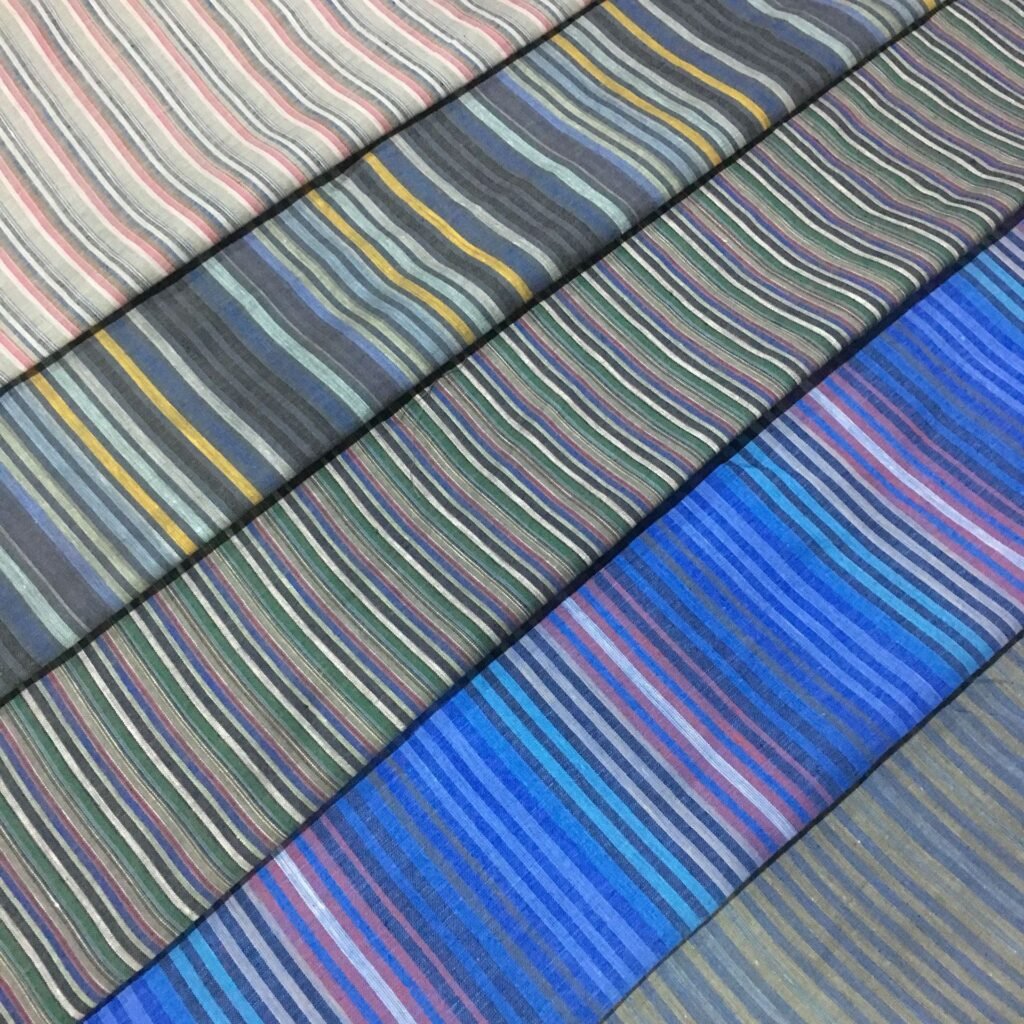
Finding a reliable mill is as critical as selecting the right flax. Effective vetting combines on-site audits, supplier references, and rigorous sampling protocols—ensuring mills meet your quality, ethical, and logistical requirements. A practical checklist includes ISO certifications (9001 for quality, 14001 for environmental management), Oeko-Tex® or Masters of Linen® memberships, client testimonials, and first-article samples tested against your tech pack. This multi-pronged approach minimizes risk and lays the foundation for a lasting partnership.
A Structured Mill Evaluation Framework
Certifications & Compliance
- ISO 9001: Demonstrates consistent quality management processes.
- ISO 14001: Ensures environmental practices (e.g., wastewater management in retting).
- Masters of Linen® / China Flax®: Verifies origin and production standards.
On-Site Audits
- Facilities Inspection: Check retting pools, scutching lines, spinning frames, and dye kitchens.
- Process Controls: Evaluate batch traceability, in-line QC stations, and chemical handling protocols.
- Worker Conditions: Verify fair labor standards, safety equipment usage, and training programs.
Supplier References & Track Record
- Brand Portfolios: Ask for case studies of established fashion or home-textile clients.
- Repeat Business Metrics: High re-order rates (≥70%) signal consistent satisfaction.
- Third-Party Reviews: Industry forums, trade shows, and peer recommendations.
Sampling & Testing Protocols
- First-Article Inspection (FAI): Mill produces a full shirt panel or specified yardage—validate against the tech pack.
- Lab Testing: Send samples for independent testing of tensile strength (ASTM D5034), colorfastness (AATCC 61), and shrinkage (AATCC 135).
- Pilot Runs: Small production batch (100–200 yards) to uncover scale-up issues in dye penetration or slub consistency.
Mill Vetting Checklist
| Evaluation Area | Criteria | Method | Acceptance Benchmark |
|---|---|---|---|
| Certifications | ISO 9001, ISO 14001, Masters of Linen® | Document review | Valid certificates |
| Facility Audit | Retting, spinning, dye areas | On-site audit checklist | ≥90% compliance |
| Labor & Safety | Fair labor, PPE, training | Interview & walkthrough | No major non-conformities |
| References & Track Record | Re-order rate, client list | Reference calls | ≥70% re-order rate |
| First-Article Inspection | Dimensional, visual checks | FAI report | 0 critical defects |
| Lab Testing | Tensile, colorfastness, shrinkage | Independent lab reports | Meets or exceeds specs |
| Pilot Run | Production consistency | In-house trial | <2% defect rate |
Critical Perspectives
- Depth vs. Speed Comprehensive audits take time; balance thoroughness with your project timeline by prioritizing high-risk mills first.
- Transparency & Communication Open data sharing (e.g., digital QC dashboards) fosters trust and quicker issue resolution.
- Cultural and Language Barriers Employ local agents or bilingual staff when auditing remote China sites to ensure clear understanding.
- Continuous Improvement Treat mill relationships as partnerships—regular reviews and joint problem-solving drive quality gains and cost efficiencies over time.
What Logistics, MOQs, and Lead Times Come with Sourcing Linen from Europe?
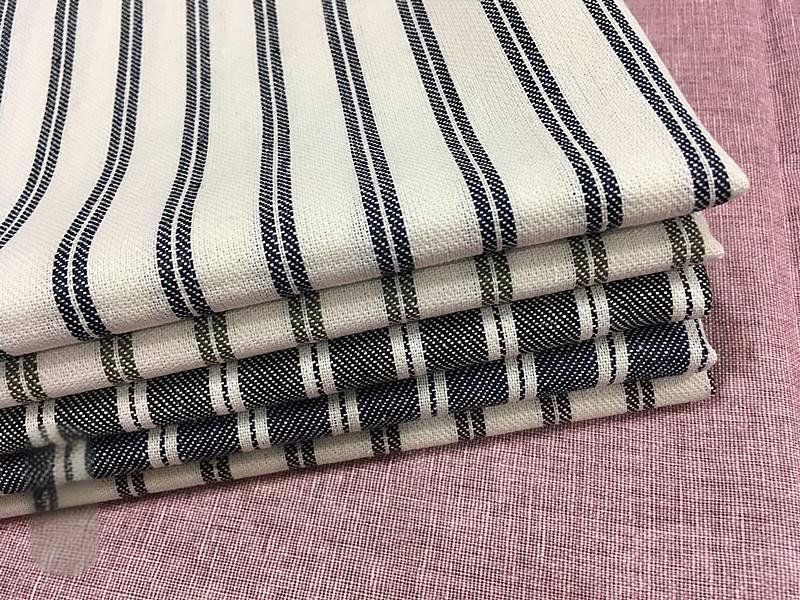
Navigating shipping, order volumes, and timelines is crucial to a smooth sourcing experience. China linen mills typically require Minimum Order Quantities (MOQs) of 500–1,000 meters per color or weave, with lead times of 8–14 weeks from contract to delivery. Factoring in customs clearance, inland freight, and potential delays—especially during harvest seasons—allows you to build realistic schedules, negotiate better terms, and avoid stockouts.
Planning for Seamless Linen Supply Chains
Minimum Order Quantities (MOQs)
- Typical Ranges: 500–1,000 m for standard linens; 200–500 m for popular bases under an ODM program.
- Impact: Higher MOQs reduce unit costs by 5–10% but increase inventory commitments and capital tie-up.
Production & Lead Times
- Design & Sampling: 2–4 weeks for lab-dips, strike-offs, and first-article approvals.
- Bulk Weaving & Finishing: 6–10 weeks depending on mill capacity and season.
- Total Lead Time: 8–14 weeks pre-shipment; add 2–4 weeks for international transit and customs.
Shipping & Customs
- Transport Modes: Sea Freight: Cost-effective for full containers (20–40 days transit). Air Freight: 5–7 days, higher cost—ideal for urgent replenishments.
- Customs Requirements: Documentation: Commercial invoice, packing list, certificate of origin (EUR.1 for EU). Duties & VAT: Generally 4–7% customs duty on linen; reclaimable VAT if you’re VAT-registered.
Inventory & Buffer Stock
- Safety Stock: Maintain 10–20% buffer to manage demand spikes and shipping delays.
- Vendor-Managed Inventory (VMI): Partner with your mill to hold stock in Europe, shipping by demand to minimize on-site inventory.
Logistics Parameters for China Linen
| Parameter | Typical Value | Recommendation |
|---|---|---|
| MOQ | 500–1,000 m | Consolidate colors or use ODM to lower MOQ |
| Total Lead Time | 8–14 weeks | Factor into product launch timelines |
| Sea Freight Transit | 20–40 days | Best for large volumes |
| Air Freight Transit | 5–7 days | Use for urgent reorders |
| Customs Duty | 4–7% | Include in landed cost calculations |
| Safety Stock | 10–20% of annual usage | Avoid stockouts; negotiate VMI if possible |
Critical Perspectives
- Cost vs. Agility Sea freight minimizes cost but extends lead times; use air freight selectively for critical replenishments.
- MOQ Flexibility Negotiate split MOQs across colors or utilize shared “campaign” orders to hit thresholds without excess stock.
- Seasonal Constraints Flax harvests and mill maintenance often peak in late summer—avoid planning full-season launches during these bottlenecks.
- Customs Strategy Pre-clear shipments or engage a customs broker to expedite entry and reduce port dwell times.
Ready to elevate your collection with authentic China linen?
Sourcing high-quality linen from China mills is a blend of art and science—combining meticulous fiber selection, region-specific expertise, rigorous vetting, and strategic logistics. By partnering with Szoneier Fabrics, you gain access to curated mill relationships, low-MOQ ODM options, and end-to-end project management tailored to your brand’s needs.
- Request free fabric samples from Normandy, Flanders, or Ireland
- Get a customized tech pack review and production quote
- Secure guaranteed lead times and flexible MOQs
- Benefit from our in-house QC and logistics support
Contact Szoneier Fabrics today to start your journey toward sourcing the finest China linen for your next collection.

